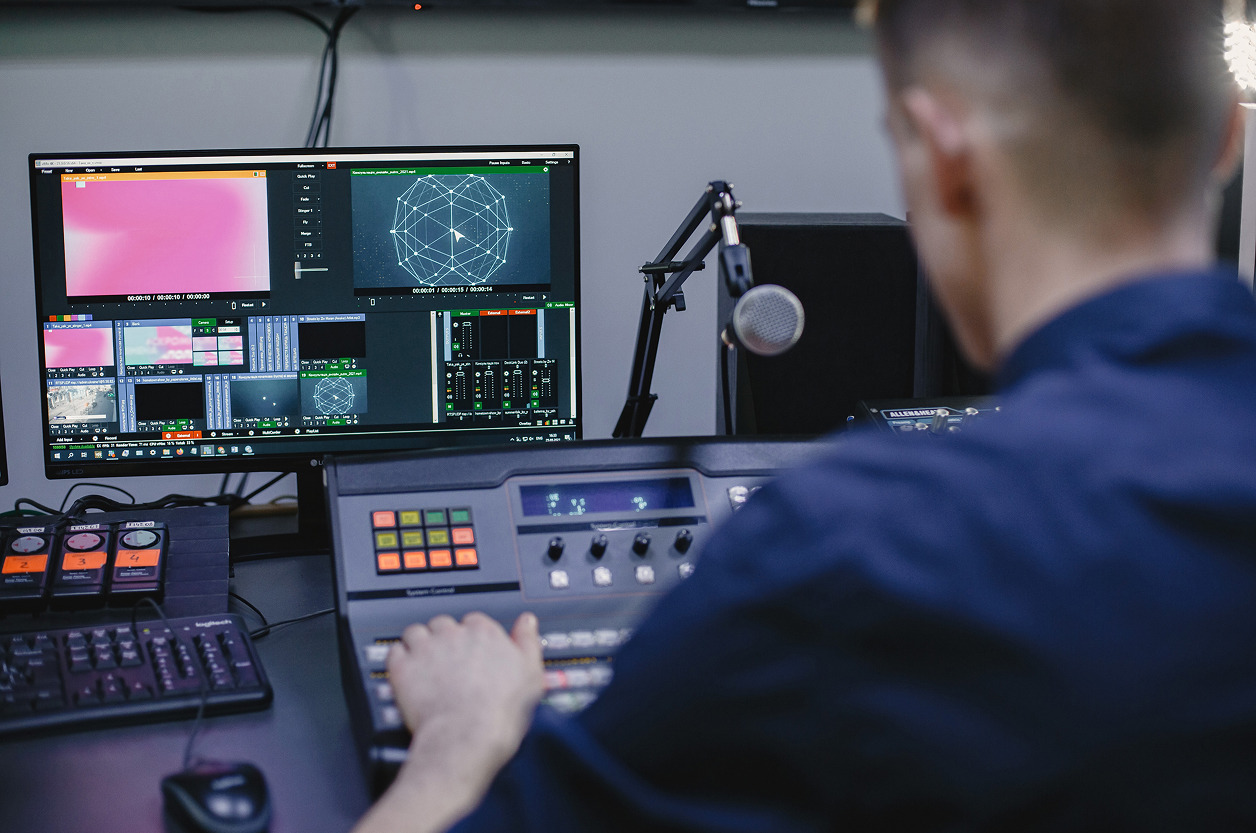From Algorithms to Audiences: How AI Is Enhancing Live Streaming Quality and Engagement

Artificial intelligence (AI) is reshaping the broadcast and media landscape, especially in the realm of live streaming. Whether it's a sports event, a news broadcast, or a gaming stream, AI is being integrated across the content delivery chain to improve video quality, enable smarter production workflows, and deepen audience engagement. This article explores the core AI-powered technologies driving these changes and how they benefit content creators and platforms alike.
AI-Enhanced Video Quality: Compression, Upscaling, and Denoising
One of the most visible applications of AI in live streaming is video enhancement. Traditional video encoding and delivery systems often face limitations when dealing with high-resolution content, unstable networks, or low-light environments. AI-based solutions address these issues through:
- AI-Based Super-Resolution: Algorithms upscale lower-resolution streams to higher quality by predicting pixel data, improving clarity without additional bandwidth.
- Denoising and Artifact Removal: Machine learning models trained on large datasets help reduce visual noise and compression artifacts in real time.
- AI-Driven Compression: Codecs like AV1 benefit from neural network-based compression, which preserves quality while minimizing data usage.
These techniques allow platforms to deliver sharper, more stable video across diverse devices and network conditions.
Adaptive Bitrate Optimization and Real-Time Encoding
AI also plays a critical role in optimizing adaptive bitrate streaming (ABR). By analyzing user behavior, device capabilities, and network metrics in real time, AI models can:
- Adjust encoding profiles dynamically to improve viewer experience.
- Predict bandwidth availability to prevent buffering.
- Personalize resolution settings based on screen size and user preferences.
This fine-tuning enhances stream stability and ensures consistent quality, particularly for global platforms serving users in areas with varying connectivity.
Automated Live Production: Cameras, Editing, and Graphics
In the past, live broadcasts required large teams for camera operation, switching, and editing. AI automates many of these tasks:
- Auto-Tracking Cameras: AI-powered cameras can track speakers or athletes, removing the need for manual camera control.
- Real-Time Clipping and Highlight Reels: Machine learning algorithms detect key moments (like goals or applause) and auto-generate clips for instant sharing.
- Dynamic Graphics and Overlays: AI-driven systems can overlay stats, lower-thirds, and effects based on speech or context, minimizing manual input.
These technologies democratize professional-grade live production, enabling smaller teams or solo streamers to produce high-quality content.
Real-Time Sentiment and Engagement Analysis
Understanding viewer behavior is key to successful streaming. AI enhances this by:
- Analyzing Chat and Comments: Natural Language Processing (NLP) detects sentiment, trends, and keywords in user interactions.
- Detecting Engagement Peaks: Machine learning identifies moments when viewer attention spikes, helping content creators replicate successful patterns.
- Dynamic Content Adaptation: Based on feedback, AI can suggest scene changes, adjust pacing, or push real-time polls.
This data-driven approach enables creators to refine their streams in real time and increase audience retention.
Content Moderation and Safety
As live content is unpredictable, moderation is essential. AI aids in:
- Real-Time Content Filtering: Computer vision and audio analysis detect nudity, violence, or prohibited speech, allowing timely intervention.
- Spam Detection in Live Chat: AI filters bots and inappropriate messages before they reach the audience.
- Compliance Monitoring: Platforms can use AI to ensure regulatory and copyright compliance during live events.

Personalized Recommendations and Post-Event Monetization
AI doesn't stop at the live stream. After broadcast, it enables:
- Smart Content Tagging: Algorithms label content by topic, mood, or structure, making it more discoverable.
- Personalized Replays: Viewers can receive a custom replay of the highlights most relevant to them.
- Ad Targeting and Monetization: AI matches viewers with relevant ads, increasing click-through rates and revenue.
These features extend the life and value of each stream.
AI at the Edge: FPGA and SoC Integration
To support low-latency, high-efficiency AI inference in live environments, many solutions integrate:
- Edge AI Processors: Purpose-built SoCs for on-device inferencing, reducing cloud dependency.
- FPGA-Based Acceleration: Programmable logic improves performance of real-time video analysis and encoding.
Such architectures reduce latency, bandwidth use, and power consumption — critical for mobile and distributed production setups.
Long-Tail Keywords and FAQs
What AI tools are used for improving live stream video quality?
AI tools include neural upscalers, real-time denoisers, and intelligent compression codecs like AV1 with ML integration.
How does AI help reduce latency in live streaming?
AI predicts network conditions and adjusts encoding in real time, improving buffer management and stream resilience.
Can AI automate sports streaming?
Yes, with auto-tracking cameras, event detection, and highlight generation, AI makes small-scale sports broadcasting much more efficient.
How does AI assist with live chat moderation?
NLP and sentiment models analyze messages for hate speech, spam, and rule violations, allowing real-time content filtering.
What hardware supports AI in live production?
Edge devices like NVIDIA Jetson, Xilinx FPGAs, and Google Coral enable real-time AI tasks for streaming workflows.
Conclusion
AI is becoming indispensable in live streaming, transforming how content is produced, delivered, and consumed. From compression and quality improvements to engagement analytics and automation, the tools now available to content creators are reshaping the media landscape. As hardware and algorithms continue to evolve, the line between professional and amateur broadcasting will blur — and AI will be at the center of that shift.
Our Case Studies








